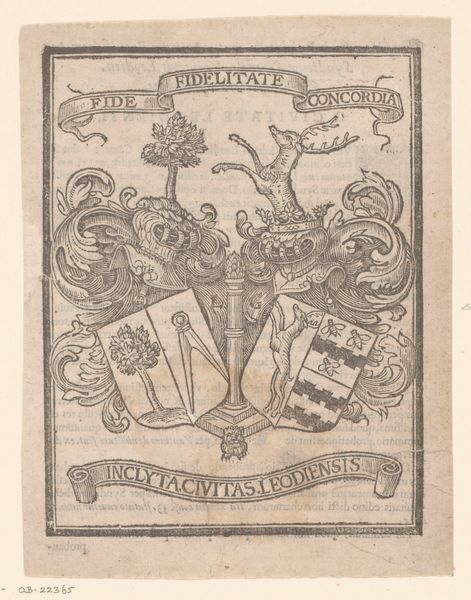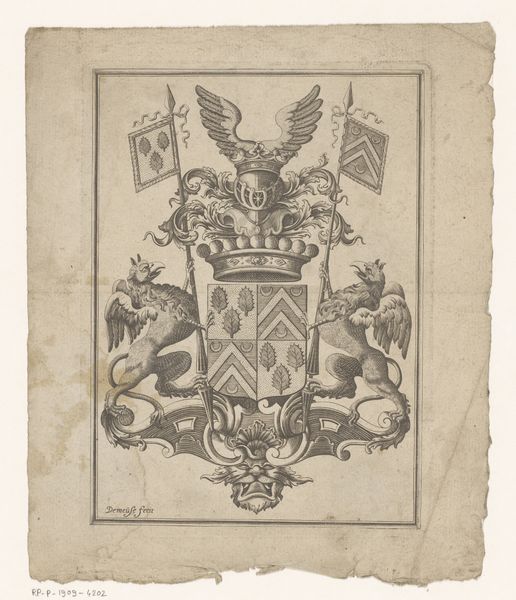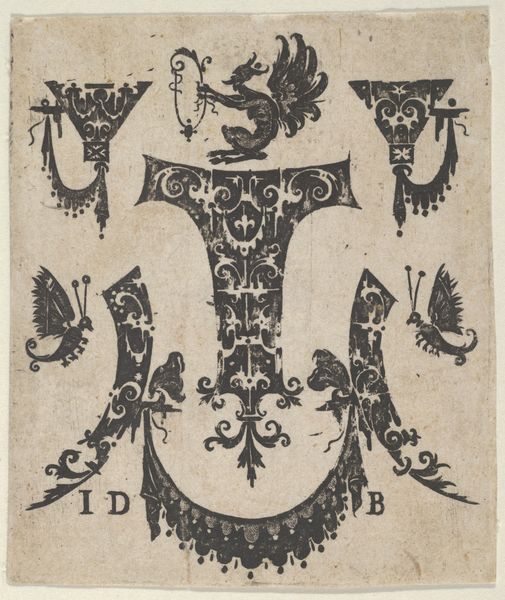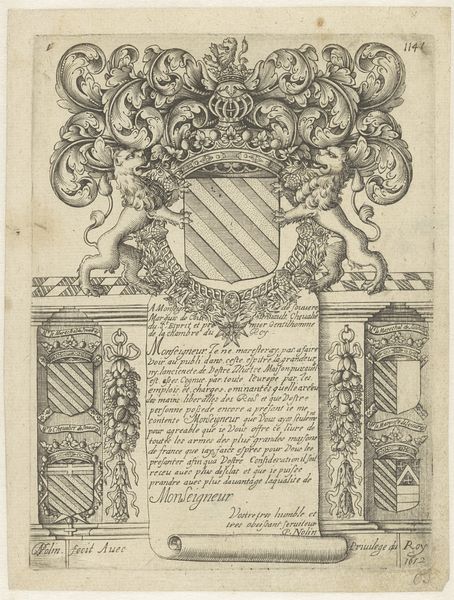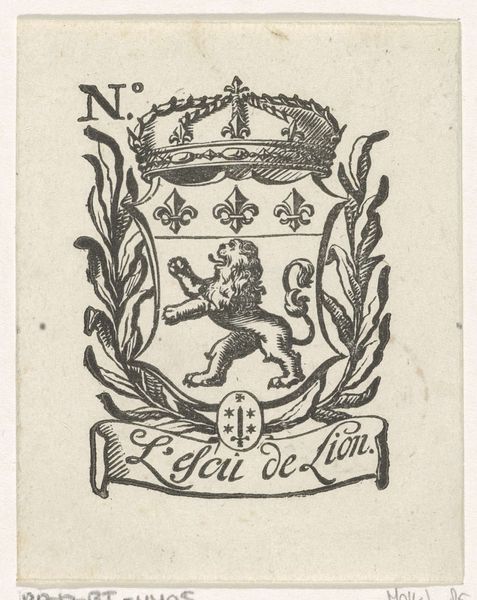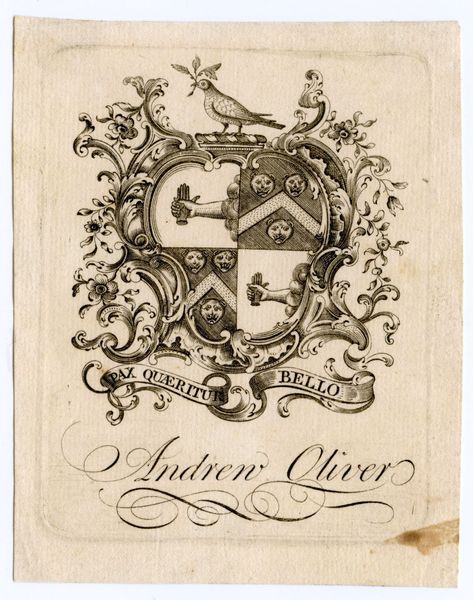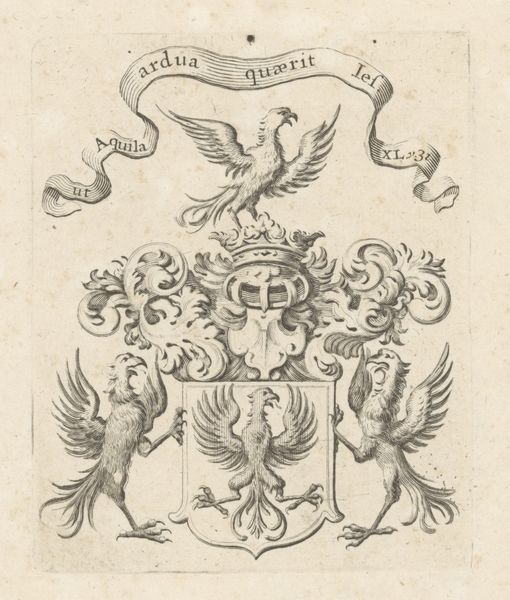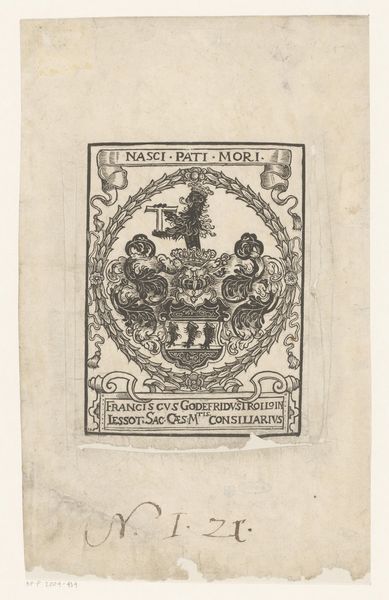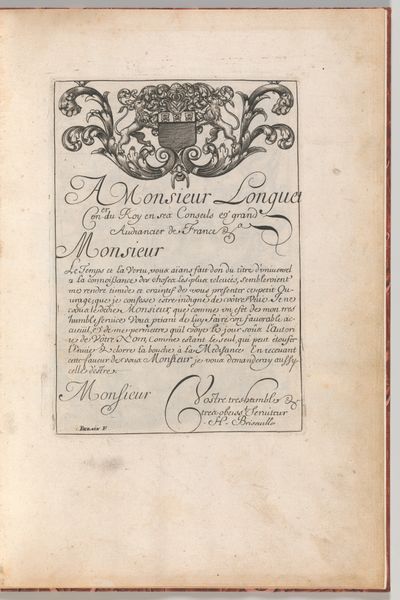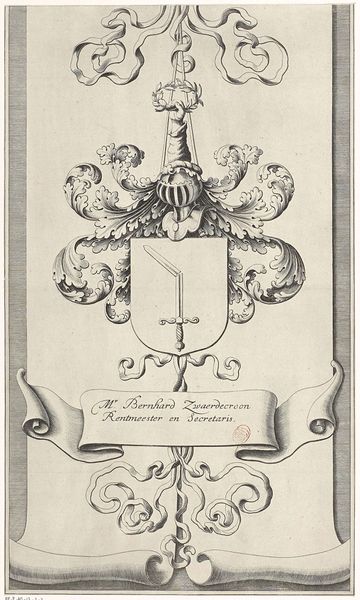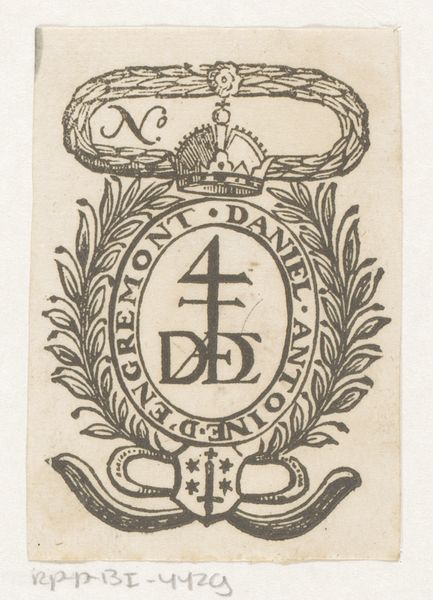
Copyright: Public domain
This bookplate for Epes Sargent was crafted by Paul Revere, likely in the mid-18th century, using engraving on paper. The design shows an armorial crest, surrounded by elaborate ornamentation. Look closely, and you'll see the fine lines that Revere meticulously cut into a metal plate, which was then inked and pressed onto paper. This process, requiring immense skill, was a crucial part of early print culture, allowing for the reproduction of images and texts. Beyond its aesthetic value, consider the social context. Revere wasn't just an artist; he was a silversmith, businessman, and revolutionary. His engravings, like this bookplate, were often commissioned by the elite, connecting artisanal production to burgeoning capitalist economies. The amount of labor involved speaks to a society valuing both craftsmanship and status. It's a potent reminder that even seemingly simple images have complex stories embedded in their making.
Comments
No comments
Be the first to comment and join the conversation on the ultimate creative platform.

